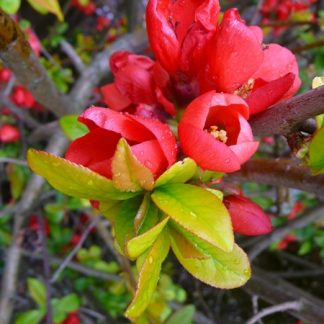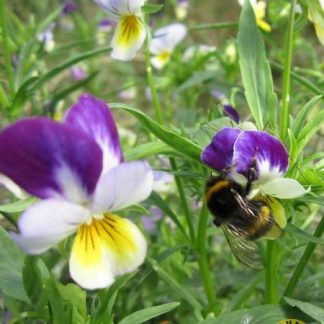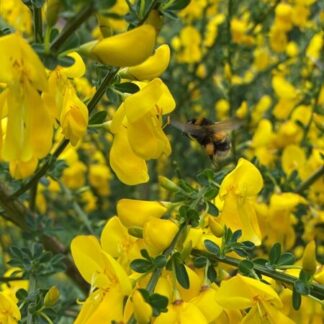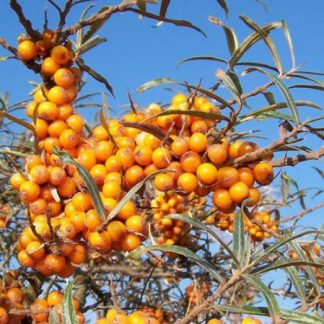Description
Elaeagnaceae (family name)
Forage for pollinators:(None) Exclusively wind-pollinated, clouds of pollen released to pollinate female trees nearby. Research now indicates that no pollinators benefit from this tree, though ladybirds and thrips have been observed feeding on its tiny pollen grains.
Flowering time: April.
Growing information: NATIVE* DECIDUOUS TREE growing to 6m (19ft) by 2.5m (8ft) and hardy to minus 40ºC, it prefers very sandy soil, growing naturally on sand dunes. The bright orange fruit ripens from September to November, and is renowned as a super-fruit with high levels of antioxidants and omega fatty acids, being researched as a food able to treat cardiac disorders, cancers and externally for burns, eczema, radiation injury. It has a vitamin C content about 15 times greater than oranges – placing sea-buckthorn fruit among the most enriched plant sources of vitamin C. The trees are dioecious (male or female flowers growing on separate trees). Both sexes must be grown if fruit is desired. Is useful in agroforestry for fruit production, though must be managed for its extreme suckering habit, which gives it a reputation as invasive in some areas.
A very shade sensitive pioneer species which dies out with competition, can tolerate extreme sites such as very alkaline lime soils, and recognized for its ability to fix nitrogen (thus a beneficial pioneer for later species). Used for centuries as soil erosion control across Europe [Research on Seabuckthorn (Hippophae rhamnoides L.) in Germany Hans Joachim Albrecht, Johannisthaler Chaussee 58, D-12437, Berlin, Germany].
Value to wildlife includes the fruit which is eaten by a wide variety of bird species, and its pollen eaten by lady bird beetles [Pollination ecology of Himalayan sea buckthorn, Hippophae rhamnoides L.(Elaeagnaceae) Yash Mangla and Rajesh Tandon* Department of Botany, University of Delhi, Delhi 110 007, India].
*Native pockets now rare and confined to coastal sand dunes, though used to be a common native all over the British Isles [Hippophaë rhamnoides L. (Elaeagnaceae family) in the Pleistocene epoch of the British Isles, M.H. Field a, B. Verleijsdonk a, S. Peglar b, M. Lewis b]
(a: Faculty of Archaeology, Leiden University, van Steenisgebouw, Einsteinweg 2, 2333CC Leiden, The Netherlands. b: Department of Earth Sciences, Natural History Museum, Cromwell Road, London SW7 5BD, UK)





